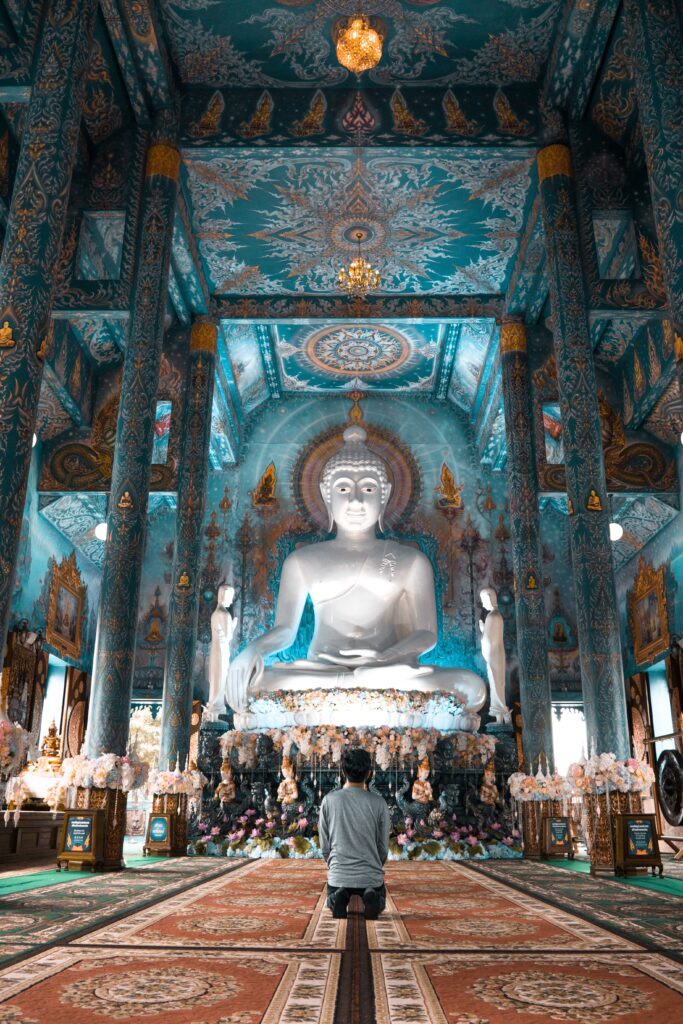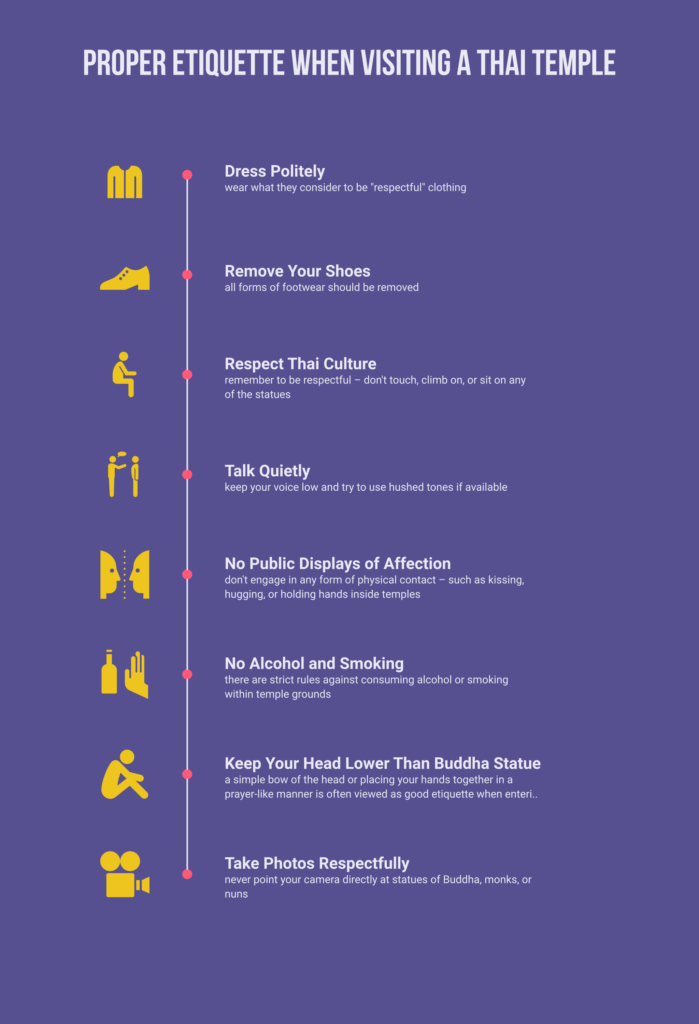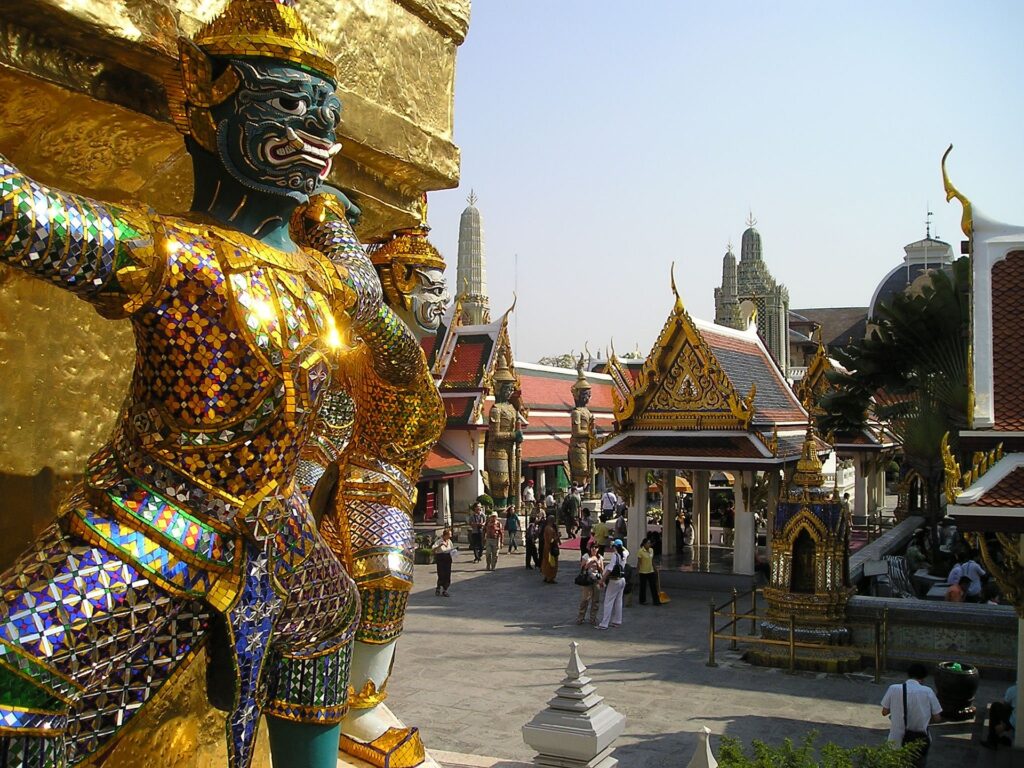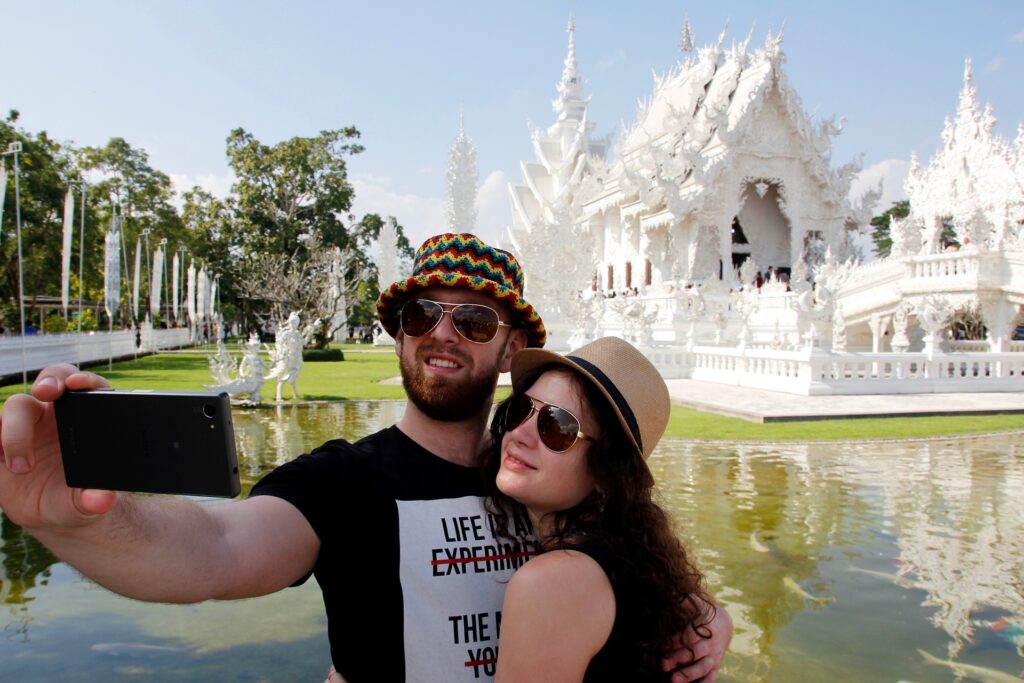Are you ready to experience the beautiful temples of Thailand? These unique structures, with their intricate designs and ancient art, are sure to amaze you. But before you make your journey, it’s important to understand the dress code for Thailand temples.
What should you wear when visiting a Thai temple? You’ve probably heard that you must wear respectful clothing while visiting these places of worship, but what exactly is appropriate?
That all depends on the size, style, and purpose of the particular temple.
We’ve compiled some guidelines to help you prepare for what is expected when visiting these amazing places—so that you can truly enjoy the experience! Do you want to know more about dress code rules for temples in Thailand? Are you curious as to why this country is so popular among tourists who seek spiritual enlightenment?
Read on and learn all there is to know about Thailand temples and what they offer!
Dress Code for Thailand Temples

All Thai temples have strict standards about how men and women should dress when visiting. If you plan on visiting a Thai temple, be sure to pack some clean, modest clothes that will cover your shoulders and knees.
Wearing revealing clothing to a religious site, such as a temple, is considered an insult and an affront to the local community.
For first-time travelers looking for more guidance on the dress code for Thailand temples, here are some suggested items of clothing for both men and women:
✅ Dress Code For Thailand Temples: What You Should Wear
Long Pants: To show respect, you should wear long pants that cover your legs completely. Not only is this a sign of politeness and respect, but you may be turned away if you don’t comply with the dress code. Covering one’s legs is part of the temple etiquette when visiting an ancient site, so bring along a pair of long pants when possible.
Long Skirts: Skirts that cover the knees are seen as a sign of respect at some temples. While you don’t need to go all-out with traditional clothing, covering up just a bit will help show your appreciation for the culture in which you are visiting.
Shirts: You should wear a modest top that covers up to the shoulders and arms. This means avoiding low-cut or tight tops, as well as sleeveless shirts.
Tee Shirts: Tee shirts are commonly worn. However, they should be loose-fitting and with a modest design. Avoid any items of clothing that contain offensive messages or images.
Trousers: Women can opt for trousers; however, they should be loose-fitting and cover the entire leg.
❎ Dress Code For Thailand Temples: What Not to Wear
Short Dresses: Wearing short dresses or skirts is considered inappropriate and disrespectfu.
Sleeveless Shirts: Sleeveless shirts are not allowed in most temples, so avoid wearing them.
Ripped or Torn clothing: ripped, or torn clothing is typically off-limits. Of course, it can be rather disappointing when you realize your favorite outfit isn’t appropriate for the occasion. But these restrictions are put in place to ensure visitors have an authentic and meaningful visit.
Tank Tops or Vests: Tank tops and vests are considered too revealing. Avoid wearing them when visiting a Thai temple.
Any clothing that exposes cleavage: It’s best to avoid any clothing that exposes your cleavage when visiting a Thai temple. Not only is this considered disrespectful, but it’s also considered improper etiquette.
If you wear any of these to a Thai temple, you will be sent away and not permitted to enter. It may also be offensive to locals, particularly Buddhists. You can bring your hats and sunglasses with you to the temples, but you’ll have to take them off at the door.
Proper Etiquette When Visiting a Thai Temple

Visiting a Buddhist temple can be enlightening and educational, even for those who are not particularly religious. Approximately 95% of Thais consider themselves Buddhist. Therefore their neighborhood temple, or “wat,” plays a significant role in Thai culture.
About 34,000 Buddhist temples serve as places of worship and meditation but also as communal hubs, especially in the country’s outlying regions. If you’ve never been to Thailand before, you might be startled to see kids playing football and attending school on the temple grounds.
Even if you find yourself in a more relaxed setting at a Thai temple than you might at a Western church, remember that there are still norms of politeness to follow.
When visiting a temple, it’s crucial to remember that it is still considered a place of worship. Respect should always be shown. Some of the guidelines to follow are:
👗 Dress Code For Thailand Temples: Dress Politely

Some tourists ignore this rule and wear what they consider to be “respectful” clothing, such as shorts or flip-flops. Moreover, due to Thailand’s weather, many visitors think that wearing more clothes is uncomfortable and inappropriate.
However, this isn’t true. The locals still expect you to be respectful of the temple’s customs and dress in a manner that is appropriate for entering a place of worship. Men should wear long shorts, trousers or jeans with a shirt that covers the shoulders and arms. Women should wear long skirts, maxi dress, trousers or jeans and similarly long-sleeved shirts.
Temples with royal ties or higher levels of importance in Thailand such as the Wat Phra Kaew at the Grand Palace, have tighter dress codes. In these cases, men and women should wear full-length pants and long-sleeved shirts or blouses.
Avoid wearing tank tops, midriff-baring shirts, short pants, or short skirts that are too short.
🩰 Remove Your Shoes
For centuries, the temples of Thailand have been a source of spiritual solace and awe-inspiring beauty. And while many visitors partake in this incredible journey, there’s one practice that must be adhered to: always remove your shoes when entering a temple.
No matter where you are in the country, no matter the religious tradition or political affiliation, taking off your shoes before stepping into a Thai temple is considered a sign of respect. This practice dates back centuries to the reign of Rama V, who implemented it as a way to preserve the sanctity and peace within the walls of these sacred spaces.
It’s also important to note that all forms of footwear should be removed. This includes sandals, flip-flops, high-heeled shoes, sneakers, and anything else you may have on your feet. Once inside the temple building, most people choose to go barefoot for the remainder of their visit out of reverence for the space.
🛕Respect Thai Culture

In Thai culture, all Buddha images are held in high regard, no matter their age or condition. When visiting places like Ayutthaya or Sukhothai and you come across ruins with Buddha statues, it’s important to remember to be respectful. Don’t touch, climb on, or sit on any of the statues.
Furthermore, locals believe that a guardian spirit resides in the raised threshold of homes and temples. Therefore, if you do happen to see one, be courteous and step over it instead of on it.
Finally, old traditions and superstitions play an integral role in everyday life for some in Thailand. So at certain locations, women may not be allowed to enter certain parts of the temple due to them being particularly holy or auspicious. There will usually be signs written in both Thai and English informing you of any restrictions.
👭 Talk Quietly
If you’ve ever been to a Thailand temple, then you know how important it is to speak quietly and show respect. Not only will speaking too loudly disrupt other temple visitors but doing so could also disrespect the Thai people’s religious customs.
Raising your voice or talking in an overly loud tone inside a Thailand temple is seen as disrespectful and inappropriate behavior. This is true even if you are simply asking directions from someone or discussing plans with a friend. Always be as quiet as possible when visiting a Thai temple.
Not only is speaking too loudly considered rude, but it can also take away from the peaceful atmosphere of the temple grounds. Many people visit temples just to escape the hustle and bustle of city life, and loud conversations can easily ruin this feeling of tranquility for them.
When conversing with friends at a Thailand temple, keep your voice low and try to use hushed tones if available. Nobody wants to hear your conversation while they are trying to pray or reflect in peace!
Remember that being mindful of other people’s feelings goes a long way during any kind of social activity. Especially those that involve cultural beliefs like those found at Thai temples.
💑 No Public Displays of Affection
Though Thailand is known for being one of the most romantic holiday destinations in the world, this doesn’t mean couples should get carried away with their feelings when exploring temples in the country.
Traditionally, it is considered disrespectful for couples to engage in any form of physical contact – such as kissing, hugging, or holding hands – inside temples due to religious beliefs and practices.
This rule applies even if you are married or in a long-term relationship, as public displays of affection on temple grounds or buildings are not acceptable behavior for worshippers or tourists alike. Not only does this prevent any disruption or disturbance to ongoing ceremonies, but it also helps preserve the sanctity of these sacred places.
Although many people might think twice about expressing their love inside a cathedral in Europe, they often don’t consider that similar rules apply within temples in other parts of the world, too – including Thailand.
So to ensure a respectful visit and maintain cultural harmony during your travels. Couples should always look out for signs which indicate that public displays of affection are not permitted.
🚭No Alcohol and Smoking
Thai people are deeply religious and revere their temples immensely. As such, there are strict rules against consuming alcohol or smoking within temple grounds. This includes refraining from engaging in activities like drinking beer or eating food while sitting inside a temple compound.
All forms of alcoholic beverages are strictly prohibited. Therefore, it’s best to avoid bringing any drinks into the premises when visiting one of these sites.
In addition, Thai people have similar prohibitions against smoking even in public areas outside of temple compounds. Though you may see some locals puffing away on cigarettes or cigars here and there. This is not recommended if you wish to show respect for culture and tradition.
Many temples will have signs clearly indicating no smoking anywhere on their grounds. While others may just ask politely to put out cigarettes upon entering their gates.
Although adhering to these precepts can be difficult for those unfamiliar with Thai culture. It’s important to bear in mind the reverence attached to these religious institutions when visiting them as a tourist. After all, showing respect for local customs is an integral part of respecting the historical heritage associated with each location visited in Thailand!
🙇Keep Your Head Lower Than Buddha Statue
The traditional belief behind this custom dates back to ancient times when royal figures would bow down to others as a sign of respect. It was believed that the highest form of respect was bowing down before royalty or people in high positions.
As Buddhism spread throughout Southeast Asia, this same form of respect took on new meaning. Kneeling with your head (and even forehead) lower than Buddha’s was seen as a way to show devotion and humility to the teachings of Lord Buddha himself.
This custom is still followed today in many temples throughout Thailand, and visitors are asked to follow suit. Though you don’t have to kneel on your knees, a simple bow of the head or placing your hands together in a prayer-like manner is often viewed as good etiquette when entering temples. Not only does this gesture show respect for Buddha and the religion. However, it’s also a sign of gratitude towards those who have preserved these religious sites for future generations.
Moreover, some believe that keeping your head lower than Buddha’s can bring good luck and blessings from higher entities. While there may be no scientific evidence for these claims, following traditional customs certainly demonstrates respect for another culture’s beliefs. Something all travelers should strive to do!
📸Take Photos Respectfully

Before you start clicking away, it’s best to know some basic etiquette when it comes to taking photos at Thailand temples. Here are a few tips on how to do so respectfully:
Research The Culture Before Visiting
Read up a bit about the country and its customs before your visit. Take note of any particular photography restrictions that you should abide by.
Ask Permission
Before taking photographs of people, always ask first if they don’t mind being photographed or if there will be any restrictions on getting certain shots (for instance, pictures within certain areas can be forbidden).
Be Mindful of Your Surroundings
You should always show respect in temples or other religious sites – just like in other public places back home. And never point your camera directly at statues of Buddha, monks, or nuns. This can also be seen as offensive behavior!
Frequently Asked Questions
Q: What temples are considered sacred in Thailand?
A: The most popular and important temples in Thailand include the Wat Rong Khun (White Temple) in Chiang Rai, Wat Phra Kaew (temple of the Emerald Buddha) in Bangkok, Wat Arun (Temple of Dawn) in Bangkok, and Wat Pho (Reclining Buddha Temple) in Bangkok.
Q: Does visiting temples require a dress code?
A: Visitors are expected to follow certain dress codes when entering temples. This usually entails wearing neck-to-ankle clothing with no bare shoulders and removing shoes and hats before stepping inside.
Q: How does a Thai person show respect to Buddha?
A: Thai people typically show respect for Buddha by kneeling with their head lower than the statue of Buddha. Otherwise, placing a light incense offering in front of the statue. Other gestures include praying with hands clasped together and bowing from the waist.
Q: What should I do if I wear inappropriate clothing for a temple?
A: Some temples provide shawls or other cover-ups for visitors to wear if their attire is inappropriate. You can also ask the temple staff beforehand about the dress code and any recommendations they have.
Q: Is it required to kneel down before entering a temple in Thailand?
A: Kneeling is not required, but it’s a gesture of respect for Buddha and the teachings of Buddhism. Visitors are asked to show their respect by either bowing or placing their hands together in a prayer-like manner when entering temples.
Final Words
Visiting temples in Thailand can provide travelers with immense insight into both its culture and religion—making it one of the most memorable experiences during your trip! However, respect is of the utmost importance when entering these spaces, as they are sacred places with a long history. Before you plan your next temple tour, read about what you should wear and how you should act to appreciate this incredible cultural experience fully.
